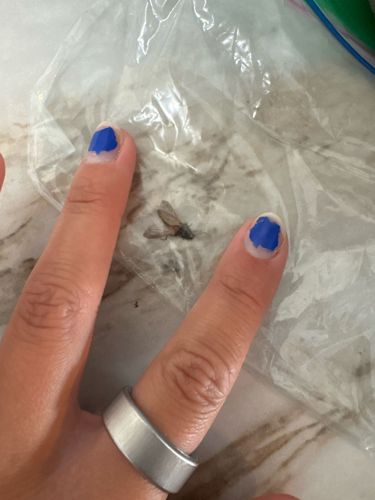Flying Ant or Winged Termite
Scientific Name: Varies by species (e.g., Formicidae for ants, Blattodea for termites)
Order & Family: Hymenoptera (ants, bees, wasps) or Blattodea (termites and cockroaches)
Size: Typically 6 to 12 mm for reproductives, but can vary by species.

Natural Habitat
Nests in soil, wood, or structures; flying reproductives emerge to swarm, especially after rain or when colonies are mature.
Diet & Feeding
Ants: omnivorous, feeding on sugars, proteins, fats, other insects. Termites: detritivores, primarily consuming cellulose (wood, plant material).
Behavior Patterns
The image shows an insect with wings, consistent with a reproductive stage (swarmer or alate) of either an ant or a termite. These winged forms emerge from their nests to mate and establish new colonies. Termite swarmers typically have straight antennae, a broad waist, and two pairs of wings of equal length. Ant swarmers have elbowed antennae, a constricted waist, and forewings longer than hindwings.
Risks & Benefits
Risks: Both flying ants and termites can be indicators of a nearby colony. Termite swarmers specifically indicate an active termite infestation that can cause significant structural damage to homes. Ants, while generally less destructive, can be a nuisance and some species can sting. Benefits: Ants play roles in aeration of soil and pest control. Termites (in their natural environment) contribute to decomposition and nutrient cycling.
Identified on: 9/19/2025